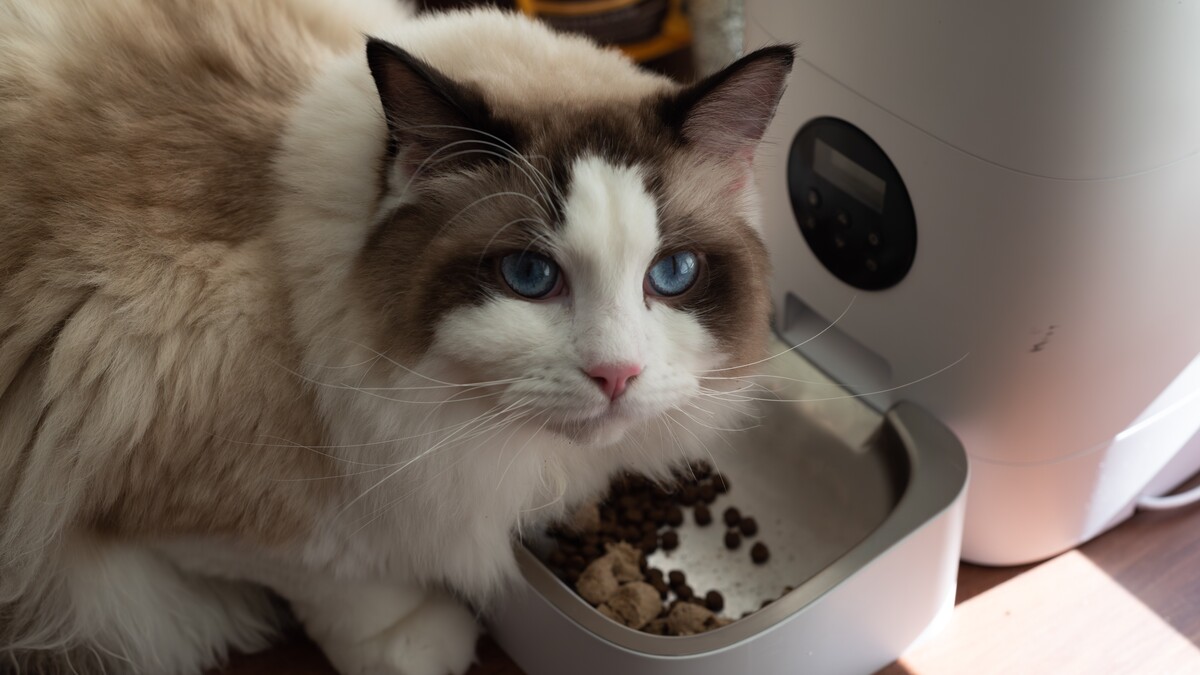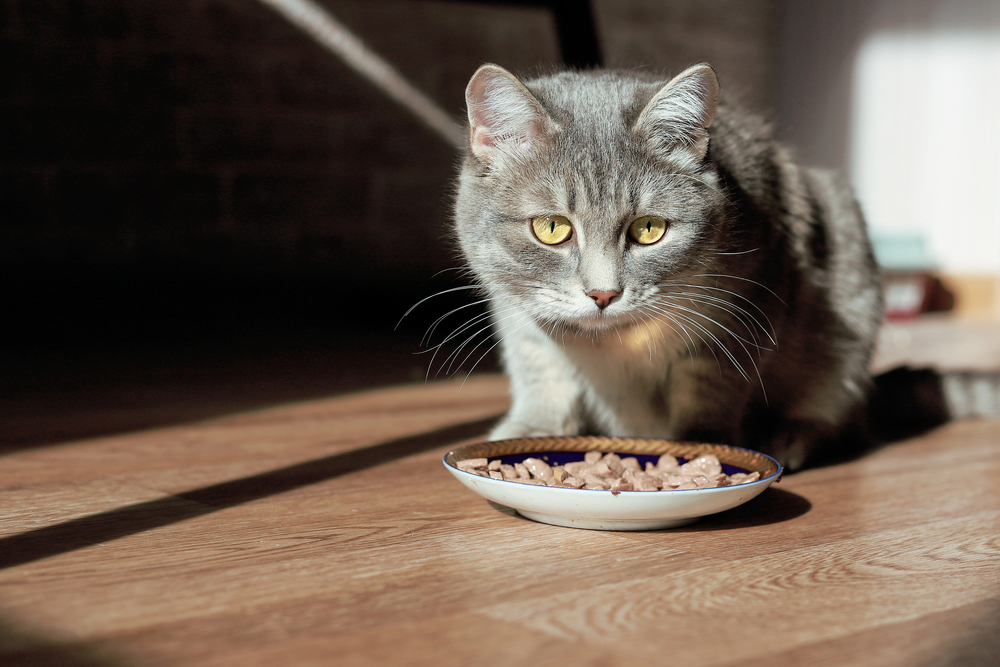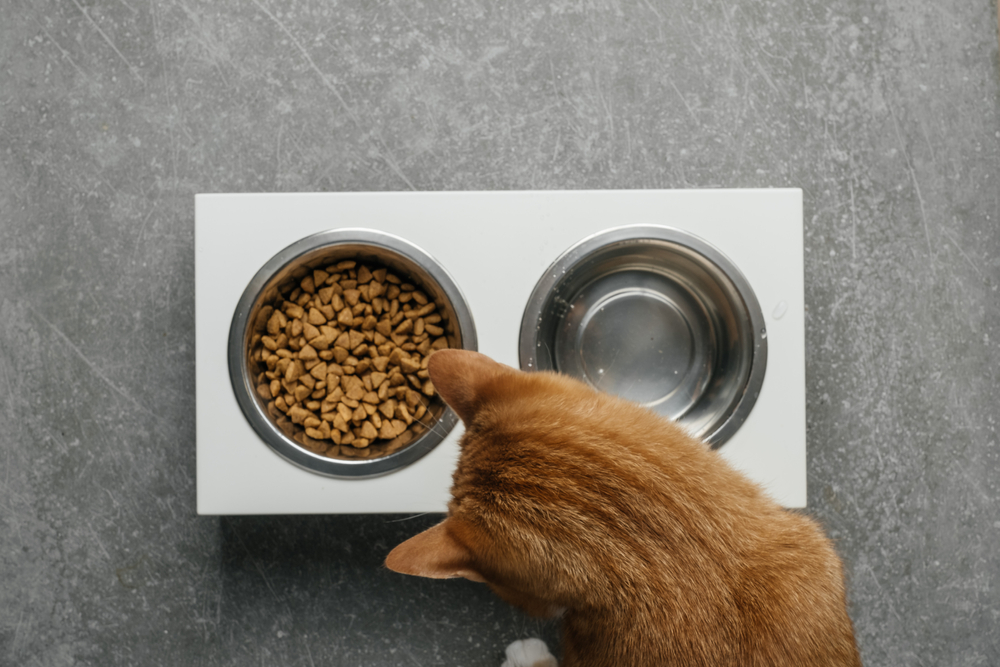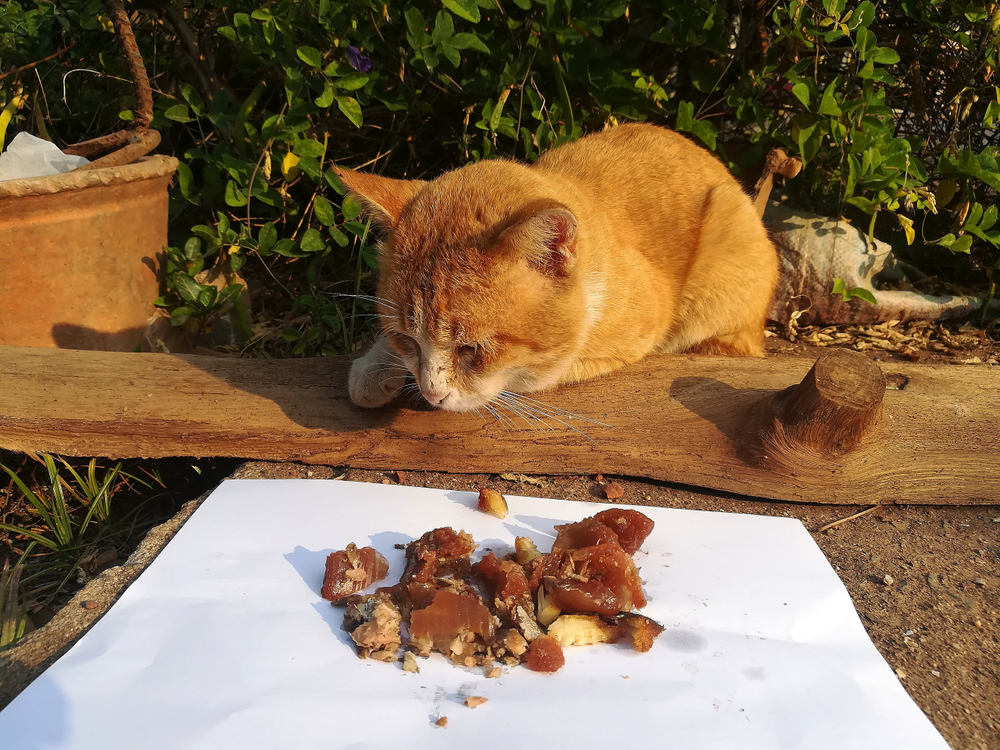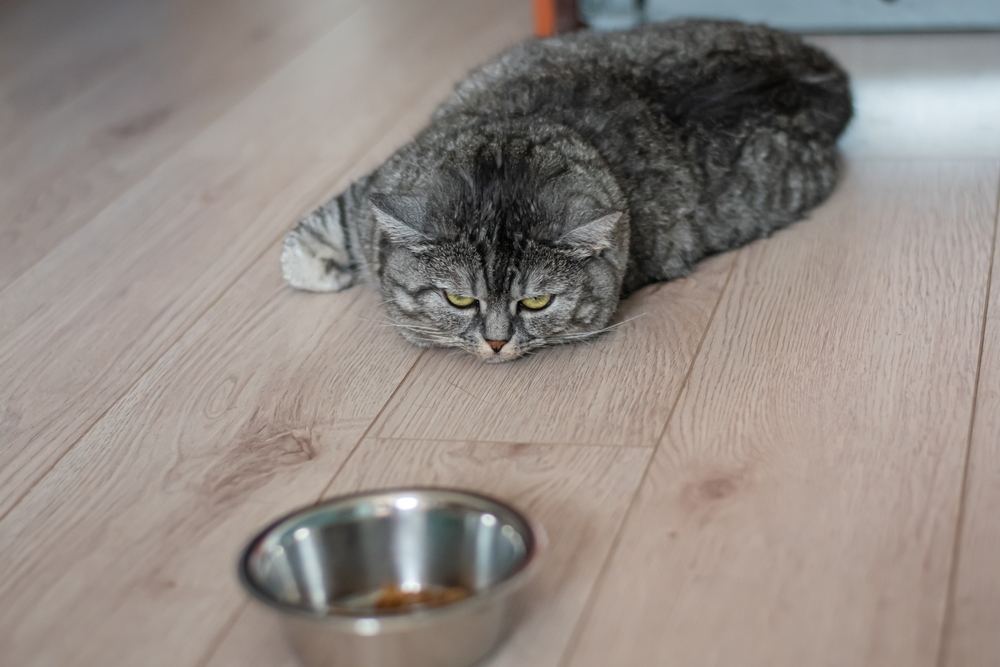📖 Table of Content:
- Why is my cat not eating after our move? A normal reaction to a sudden change?
- How long does it take for a cat to adjust to her new home?
- What should I do if my kitty stops eating?
- How to have the safest and smoothest move with a feline?
- What are other signs your fluff is stressed about moving to a different home?
“Oh, feline gods, come to my rescue! I have finally moved into the apartment of my dreams, but my fluff obviously despises it. She leaves her food bowls empty and continues to ignore me. Please tell me, why is my cat not eating after our move?”
Trust me, I get it. I myself tend to act overly worried any time my cats surprise me with new and unusual behavior. I swear, the moment I feel I have finally gained all the knowledge related to their complex being, they pull out a brand-new and even more peculiar personality trait. Just to spite me!
Luckily for all of us, there are many benevolent cat enthusiasts on the internet who love to share their knowledge and help others in need. So, without further ado, let’s get you out of your misery and see why is your kitty refusing to eat in your new home.
Why is my cat not eating after our move? A normal reaction to a sudden change?
Right off the bat, we have a resounding yes. It is common for cats to start refusing food once their owner decides to move to a different place. How rude, right? Making such a serious decision without consulting your fluff first (who is in charge of everything anyway) should be punishable, really.
Felines usually have a great appetite. I know all three of my fluffs do. They would rather sell me off to human traffickers than refuse a treat I so graciously give them very often.
If your fluff is the same, but you notice she has stopped eating ever since you moved – even for a little while – that’s definitely your sign to ring the alarm.
There can usually be a couple of reasons why your cat keeps refusing the food you are giving her, but the most common one is undoubtedly stress.
Generally speaking, felines are creatures of habits and routines, and they are definitely not appreciative when it comes to sudden changes, no matter what those changes are. Changing their usual habitat is as sudden as it can get.
I know what you are probably thinking right now; “But Aria, I needed this move! We both needed it! We have so much more space now and natural sunlight and I picked this apartment with my fluff’s best interest in mind.”
And I know you had good intentions, but trust me when I tell you – your kitty doesn’t perceive the move that way.
Your old place is something she was familiar with. It housed all those well-known scents, safe spots, and favorite places to lounge. And now they are all gone!
Because of that, your kitty is under a lot of stress, and you will need to give her some time to get used to her new surroundings.
How long does it take for a cat to adjust to her new home?
Well, there’s no definite answer to this question. Every kitty is different in her own unique way. Some are pretty laid-back and easygoing, and they start eating after a couple of days. As long as they have their favorite hooman there and their trusty litter box – they are good to go.
However, other felines are not so simple. They get easily and strongly attached to the home they have been in for the majority of their life, which is why they require more time to adjust to a new place.
Most cat experts claim that it should not take more than two days for an average feline to adjust to her new home and start eating again. However, if you notice more than two days have gone by without a change, then I suggest you contact your vet immediately.
What should I do if my kitty stops eating?
The stress your kitty experiences can have a very bad effect on her and can even be fatal. Not to mention what a sudden lack of nutrients can do to her body. So, just to be sure, contact your vet and ask him for advice, especially if your fluff starts vomiting, or having diarrhea, fatigue, or excessive weight loss.
Apart from consulting an expert, the least you can do is show your kitty you care. Bring out her favorite toys and blankets, and place them around your new home. If possible, bring in some of your old furniture, or anything that bears your cat’s scent.
The smell of those old things will comfort your kitty and be something familiar she can cling to in your new place. Also, make sure you show her where her litter box is.
But the most important thing you can do is provide her with a calm environment. Loud guests, handymen, or frantic furniture arrangements are off the limits. If you want your fluff to get better and start eating soon, you have to make sure she feels safe in this new place she’s about to call home.
How to have the safest and smoothest move with a feline?
In order to have a safe moving experience with a cat, you need to make sure everything in your new home is already done. So, before you bring in your fluff, make sure all the walls are painted, lighting fixtures are securely attached to the ceiling, and plumbing jobs are done.
If you bring your kitty into an unfinished home, you can risk stressing her out or putting her into a position to eat a piece of tape or twine that she would inevitably find all around your new home.
Next, make sure you don’t accidentally buy a plant (or plants) that can be found on the list of toxic plants for felines. Once your kitty settles in, she’ll start to explore, and you definitely don’t want her to stick her little muzzle into forbidden plant pots.
Also, let your guests know what plants are off-limits. People tend to opt for greenery as their housewarming gift, so you should think in advance and ask them to select their plants carefully.
You should also keep your kitty inside your new home for at least two weeks before you let her step her little paws outside. Some cat experts recommend you extend this period to six weeks, but that all depends on your feline and her ability to adjust, of course.
This is important because a home-sick kitty will try her hardest to run back to her previous home, even though there’s no one there waiting for her. Therefore, make sure you don’t let her outside, or if you do, use a harness, invest in a catio, or cat-proof your balcony.
All in all, be there for your kitty during the assimilation process. Shower her with all the love she deserves. Soon enough, she’ll forgive you for the rash decision you made without her.
What are other signs your fluff is stressed about moving to a different home?
Apart from refusing to eat, your fluff can showcase other alarming signs of being stressed because of your moving arrangements. In order to be able to help her, you need to become aware of those signs and understand them, because that’s the only way you can properly help her.
1. She continuously fails to use her litter box
The first tell-tale sign your kitty is stressed and has difficulties adjusting to her new home is if she continuously fails to use her litter box, or if she’s urinating over the edge of it.
This happens because her well-known litter box is not in its usual place. In fact, nothing she used to know is in its usual place and that makes her extremely anxious.
Be patient with your kitty and give her some time to get used to everything. Don’t punish her for urinating where she’s not supposed to, but rather show her where to do it.
2. She is isolating herself
Sure, cats are notorious for their independence and desire to be left alone. But if your fluff continuously seeks hiding places in your new home, that’s an obvious sign she is stressed.
If this happens, don’t force her into coming out of her safe place. Let her be and allow her to decide on her own when is the right time to come to you.
3. She has sudden changes in behavior
If your kitty becomes more aggressive in your new home, starts seeking more attention, or becomes more vocal than usual, be sure that’s because she doesn’t approve of the sudden change in her environment.
Every feline reacts differently to a stressful situation. Some isolate themselves, while others start to act out of character. Either way, as a responsible cat parent you need to find a way to make her feel better.
4. She excessively grooms herself
Felines are also known for their meticulous grooming sessions. However, excessive grooming habits are an obvious sign of a stressed kitty.
If you notice your fluff licks herself more than usual, take her to the vet. By doing so, you can prevent bald spots from occurring since excessive licking can result in the loss of fur in the back, belly, or inner legs area.
